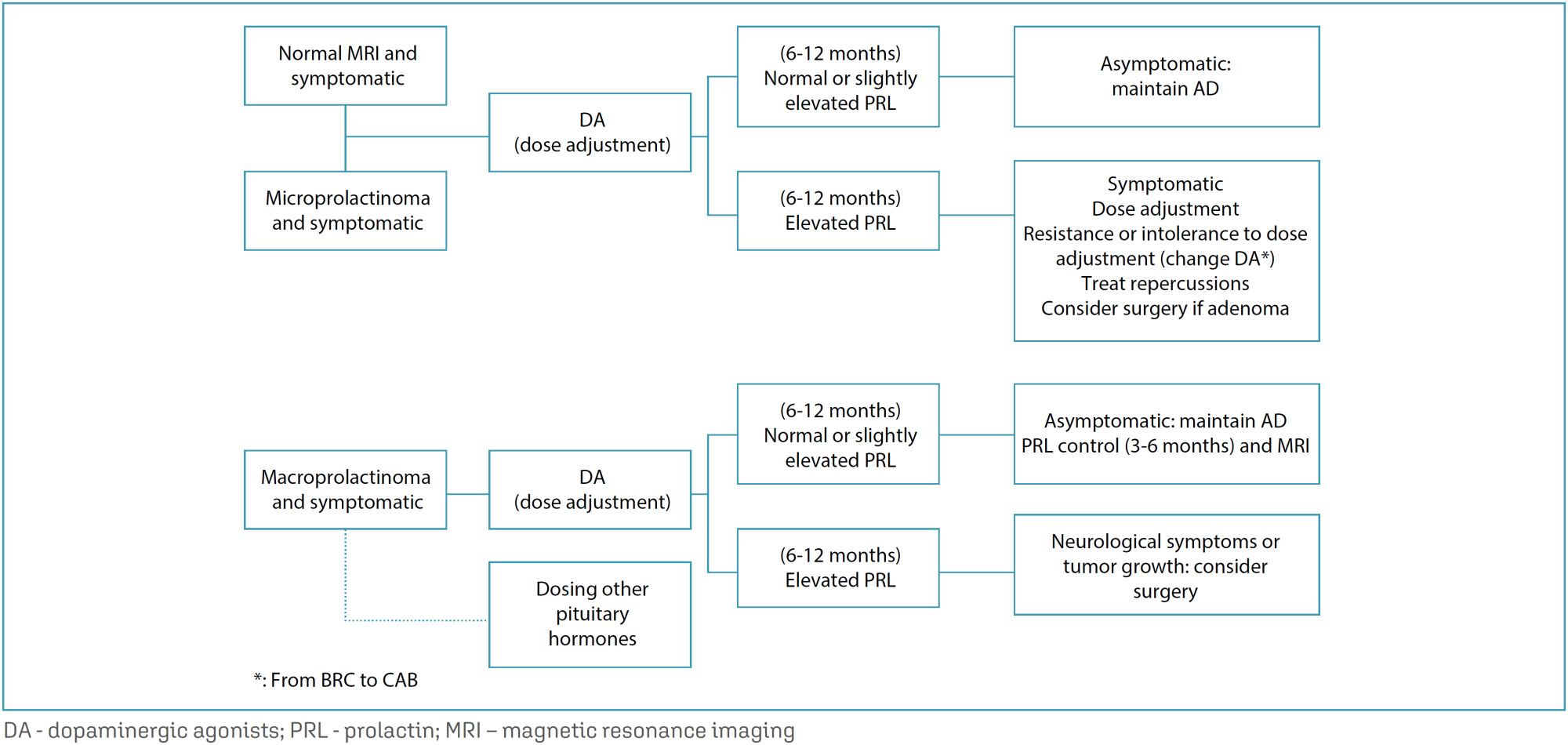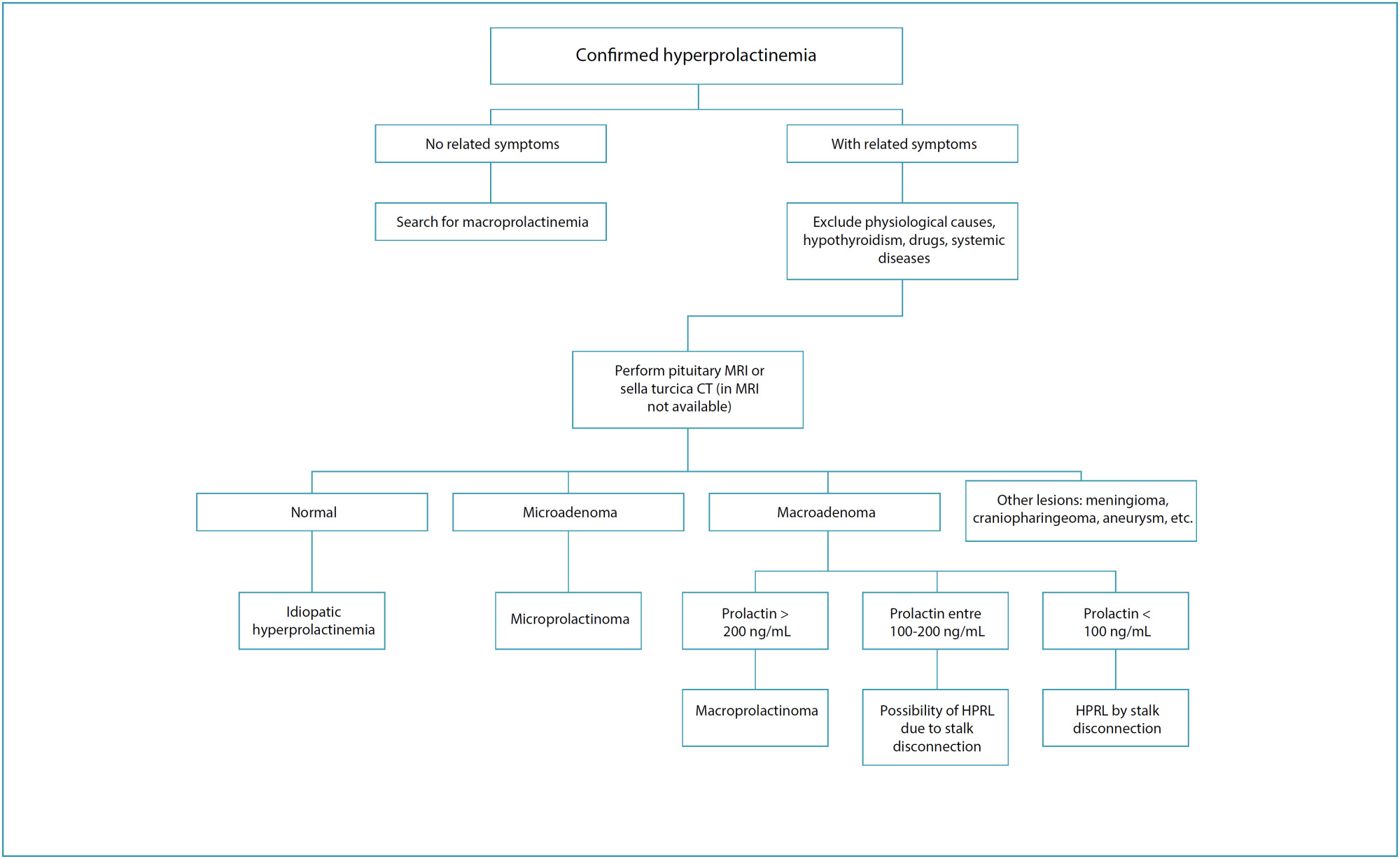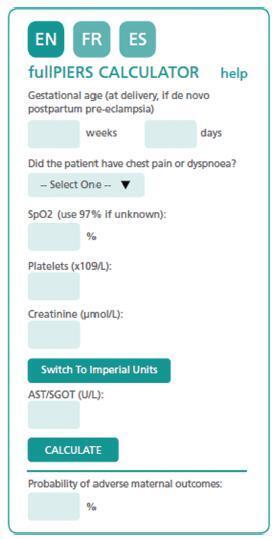-
Original Article10-03-2000
Factors Related to Obesity and Android Pattern of Body Fat Distribution in Climacteric Women
Revista Brasileira de Ginecologia e Obstetrícia. 2000;22(7):435-441
Abstract
Original ArticleFactors Related to Obesity and Android Pattern of Body Fat Distribution in Climacteric Women
Revista Brasileira de Ginecologia e Obstetrícia. 2000;22(7):435-441
DOI 10.1590/S0100-72032000000700006
Views134See morePurpose: to describe sociodemographic characteristics of a group of climacteric women in order to discover the frequency and the variables associated with obesity and android profile of body fat distribution. Methods: an observational study was carried out in 518 patients aged 45 to 65 years, in a climacterium outpatient clinic. Age, color, menopausal status, duration of menopause, physical activity, smoking status, diet, alcohol intake, personal and family antecedents of arterial hypertension, diabetes mellitus, cardiovascular disease, dyslipidemia and obesity were considered. Body mass index and the waist/hip ratio were the dependent variables. For the statistical analysis Wilcoxon test, Pearson’s correlation coefficient, with a 5% level of significance, and multivariate analysis using regression model were used. Results: more than two thirds of the participants were nonobese with an android profile and postmenopausal. One fourth had physical activity and were smokers; half reported an inadequate diet and one fifth were alcoholics. Patients with an android profile presented higher mean age than women with gynecoid pattern. Personal antecedents of obesity, arterial hypertension, diabetes and family history of diabetes were related to obesity and android pattern. Postmenopausal status was significantly associated with the android profile. Conclusions: the majority of the participants were nonobese with an android profile, white, postmenopausal, sedentary, neither smokers nor alcoholics. The main factors related to obesity and android pattern were personal antecedents of obesity, arterial hypertension, diabetes, family history of diabetes and particularly, postmenopausal status with android profile.
-
Original Article10-03-2000
Gastroschisis: Prenatal Evaluation of Prognostic Factors for Postnatal Outcome
Revista Brasileira de Ginecologia e Obstetrícia. 2000;22(7):421-428
Abstract
Original ArticleGastroschisis: Prenatal Evaluation of Prognostic Factors for Postnatal Outcome
Revista Brasileira de Ginecologia e Obstetrícia. 2000;22(7):421-428
DOI 10.1590/S0100-72032000000700004
Views105See morePurpose: to evaluate 24 cases of gastroschisis, in relation to the prognostic factors that interfered with postnatal outcome. Patients and Method: twenty-four pregnancies with fetal prenatal ultrasound diagnosis of gastroschisis, during an 8-year period, were analyzed. Gastroschisis was classified into isolated, when there were no other structural abnormalities, or associated, when other abnormalities were present. For both groups the following parameters were examined: ultrasound bowel dilatation (>18 mm), obstetric complications and postnatal outcome. Nonparametric Mann-Whitney and exact Fisher’s tests were used for statistical analyses. Results: in 9 cases (37.5%) gastroschisis was associated with other abnormalities, and in 15 cases it was isolated (62.5%). All cases of associated gastroschisis had a letal prognosis, therefore the overall mortality rate was 60.8%. In the group of isolated gastroschisis, all were born alive and were submitted to surgery, but the survival rate after surgical correction was 60%. The median gestational age at birth was 35 weeks and birth weight 2,365 grams. Premature delivery was observed in 10 cases, mainly as a consequence of obstetric complication. Two newborns were small for gestational age, and only 3 had birth weight >2,500 grams. Oligohydramnios was found in 46.6% and it was more frequent in the group of postnatal death (66.7%). Ultrasound assessment of bowel showed bowel dilatation in 86.6%, however, without relation to the prognosis and postnatal bowel findings. There was no significant difference between gestational age at birth and birth weight comparing the survivor and postnatal death groups. Conclusions: isolated gastroschisis had a better prognosis when compared to associated, therefore this prenatal differentiation is important. Isolated gastroschisis was often associated with prematurity, small birth weight and obstetric complications. Prenatal diagnosis allows better monitoring of fetal and obstetric conditions. Delivery should be at term, unless presenting with obstetric complications.
-
10-03-2000
MAIS UMA META ATINGIDA
Revista Brasileira de Ginecologia e Obstetrícia. 2000;22(7):399-399
-
07-23-2000
Isoformas de Prolactina no Fluido Folicular de Pacientes Submetidas a FIV
Revista Brasileira de Ginecologia e Obstetrícia. 2000;22(10):658-658
-
07-23-2000
Avaliação Clínica e Urodinâmica de Mulheres com Instabilidade Vesical Antes e Após Eletro-estimulação Funcional do Assoalho Pélvico
Revista Brasileira de Ginecologia e Obstetrícia. 2000;22(10):658-658
Abstract
Avaliação Clínica e Urodinâmica de Mulheres com Instabilidade Vesical Antes e Após Eletro-estimulação Funcional do Assoalho Pélvico
Revista Brasileira de Ginecologia e Obstetrícia. 2000;22(10):658-658
DOI 10.1590/S0100-72032000001000012
Views57Avaliação Clínica e Urodinâmica de Mulheres com Instabilidade Vesical Antes e Após Eletro-estimulação Funcional do Assoalho Pélvico[…]See more -
07-23-2000
Estudo Retrospectivo da Prova de Trabalho de Parto na Viabilização do Parto Vaginal em Gestantes com uma Cesárea Anterior
Revista Brasileira de Ginecologia e Obstetrícia. 2000;22(10):657-657
Abstract
Estudo Retrospectivo da Prova de Trabalho de Parto na Viabilização do Parto Vaginal em Gestantes com uma Cesárea Anterior
Revista Brasileira de Ginecologia e Obstetrícia. 2000;22(10):657-657
DOI 10.1590/S0100-72032000001000010
Views63Estudo Retrospectivo da Prova de Trabalho de Parto na Viabilização do Parto Vaginal em Gestantes com uma Cesárea Anterior[…]See more -
07-23-2000
Impacto da Ação Educativa sobre a Taxa de Abandono do Serviço de Esterilidade Conjugal da UNICAMP
Revista Brasileira de Ginecologia e Obstetrícia. 2000;22(10):657-657
Abstract
Impacto da Ação Educativa sobre a Taxa de Abandono do Serviço de Esterilidade Conjugal da UNICAMP
Revista Brasileira de Ginecologia e Obstetrícia. 2000;22(10):657-657
DOI 10.1590/S0100-72032000001000011
Views62Impacto da Ação Educativa sobre a Taxa de Abandono do Serviço de Esterilidade Conjugal da UNICAMP[…]See more
-
Original Article07-20-2004
Search for human papillomavirus in samples of normal endometrial tissue and tissue with carcinoma by the PCR technique
Revista Brasileira de Ginecologia e Obstetrícia. 2004;26(4):277-287
Abstract
Original ArticleSearch for human papillomavirus in samples of normal endometrial tissue and tissue with carcinoma by the PCR technique
Revista Brasileira de Ginecologia e Obstetrícia. 2004;26(4):277-287
DOI 10.1590/S0100-72032004000400003
Views126653See moreOBJECTIVE: to compare the prevalence of DNA of human papillomavirus (HPV), in samples of normal endometrial tissue, and tissue with endometrial carcinoma of women submitted to surgical treatment (hysterectomy), or between endometrial carcinoma and benign disease, through the PCR technique. METHODS: this is an observational control-case study where 100 women (50 with endometrial carcinoma and 50 with normal endometrial tissue) were analyzed for the detection of HPV DNA in samples of endometrial tissue kept in paraffin blocks by the PCR technique. The cases of endometrial carcinoma with uncertain primary site of the lesion as well as the cases with previous or current history of pre-neoplasic lesions or carcinoma of the lower genital tract were excluded. Variables as age, smoking habit, endometrial trophism, squamous differentiation and degree of tumor differentiation were also evaluated. RESULTS: the estimated relative risk of the presence of HPV in the endometrial carcinoma and in the normal endometrial tissue was the same. HPV was detected in 8% of the cases of carcinoma and 10% in the normal endometrial tissue. In spite of HPV having been 3.5 times more detected in women with smoking habit in the group without carcinoma, there was no statistical difference. The presence of HPV was also not correlated with the women’s age, endometrial trophism, squamous differentiation and degree of tumor differentiation. The HPV types 16 (5 cases) and 18 (4 cases) were the viruses most frequently found both in the normal endometrial tissue or in the tissue with carcinoma. No oncogenic low risk virus was detected in the samples. CONCLUSION: The same proportion of HPV is present in the endometrial tissue of women with endometrial cancer and with normal endometrium. It could not be demonstrated a possible correlation of DNA of HPV with the development of endometrial carcinoma.
-
FEBRASGO POSITION STATEMENT04-25-2024
Hyperprolactinemia in women: treatment
Revista Brasileira de Ginecologia e Obstetrícia. 2024;46:e-FPS05
Abstract
FEBRASGO POSITION STATEMENTHyperprolactinemia in women: treatment
Revista Brasileira de Ginecologia e Obstetrícia. 2024;46:e-FPS05

-
FEBRASGO POSITION STATEMENT04-25-2024
Hyperprolactinemia in women: diagnostic approach
Revista Brasileira de Ginecologia e Obstetrícia. 2024;46:e-FPS04
Abstract
FEBRASGO POSITION STATEMENTHyperprolactinemia in women: diagnostic approach
Revista Brasileira de Ginecologia e Obstetrícia. 2024;46:e-FPS04

-
FEBRASGO POSITION STATEMENT00-00-2024
Breech birth care: Number 1 – 2024
Revista Brasileira de Ginecologia e Obstetrícia. 2024;46:e-rbgofps1
Abstract
FEBRASGO POSITION STATEMENTBreech birth care: Number 1 – 2024
Revista Brasileira de Ginecologia e Obstetrícia. 2024;46:e-rbgofps1
-
Letter to the Editor04-09-2024
Letter to Editor: In response to existence of SARS-CoV-2 in the peritoneal fluid
Revista Brasileira de Ginecologia e Obstetrícia. 2024;46:e-rbgo24
Abstract
Letter to the EditorLetter to Editor: In response to existence of SARS-CoV-2 in the peritoneal fluid
Revista Brasileira de Ginecologia e Obstetrícia. 2024;46:e-rbgo24
-
FEBRASGO POSITION STATEMENT04-02-2024
Use of hormones and risk of venous thromboembolism
Revista Brasileira de Ginecologia e Obstetrícia. 2024;46:e-FPS02
Abstract
FEBRASGO POSITION STATEMENTUse of hormones and risk of venous thromboembolism
Revista Brasileira de Ginecologia e Obstetrícia. 2024;46:e-FPS02
Views911See moreKey points
•The risk of venous thromboembolism (VTE) is not increased in women using long-acting reversible contraceptive methods (LARCs) with progestogens.
•Oral contraceptives with levonorgestrel or norgestimate confer half the risk of VTE compared to oral contraceptives containing desogestrel, gestodene or drospirenone.
•Progestogen-only pills do not confer an increased risk of VTE.
•Women using transdermal contraceptive patches and combined oral contraceptives (COCs) are at an approximately eight times greater risk of VTE than non-users of hormonal contraceptives (HCs), corresponding to 9.7 events per 10,000 women/years.
•Vaginal rings increase the risk of VTE by 6.5 times compared to not using HC, corresponding to 7.8 events per 10,000 women/years.
•Several studies have demonstrated an increased risk of VTE in transgender individuals receiving hormone therapy (HT).
•Hormone therapy during menopause increases the risk of VTE by approximately two times, and this risk is increased by obesity, thrombophilia, age over 60 years, surgery and immobilization.
•The route of estrogen administration, the dosage and type of progestogen associated with estrogen may affect the risk of VTE in the climacteric.
•Combined estrogen-progesterone therapy increases the risk of VTE compared to estrogen monotherapy.
•Postmenopausal HT increases the risk of thrombosis at atypical sites.
-
FEBRASGO POSITION STATEMENT04-02-2024
Vulvovaginitis in pregnant women
Revista Brasileira de Ginecologia e Obstetrícia. 2024;46:e-FPS03
Abstract
FEBRASGO POSITION STATEMENTVulvovaginitis in pregnant women
Revista Brasileira de Ginecologia e Obstetrícia. 2024;46:e-FPS03
Views876See moreKey points
• The balanced vaginal microbiome is the main factor defending the vaginal environment against infections. Lactobacilli play a key role in this regard, maintaining the vaginal pH within the normal range (3.8 to 4.5).
•Hormonal and immune adaptations resulting from pregnancy influence changes in the vaginal microbiome during pregnancy.
•An altered vaginal microbiome predisposes to human immunodeficiency virus (HIV) infection.
•Bacterial vaginosis is the main clinical expression of an imbalanced vaginal microbiome.
•Vulvovaginal candidiasis depends more on the host’s conditions than on the etiological agent.
•Trichomonas vaginalis is a protozoan transmitted during sexual intercourse.
•The use of probiotics is not approved for use in pregnant women.
-
Review Article09-01-2017
Preeclampsia
Revista Brasileira de Ginecologia e Obstetrícia. 2017;39(9):496-512
Abstract
Review ArticlePreeclampsia
Revista Brasileira de Ginecologia e Obstetrícia. 2017;39(9):496-512
Views651Abstract
The authors review hypertensive disease during pregnancy with an academic and practical view, and using the best evidence available. This disease, which is the most important clinical disease in Brazilian pregnant women, may have its incidence reduced with prevention through the use of calcium and aspirin in pregnant women at risk. Previously, it was a disease that presented with hypertension with proteinuria, but it has now been classified with new clinical parameters besides proteinuria. Morbidity and mortality should be reduced in a continental country such as Brazil using protocols for the early treatment of complications by calculating severe outcomes in preeclampsia. The early treatment of acute hypertension, use of magnesium sulfate and early hospitalization in cases of preeclampsia are concepts to pursue the reduction of our pregnant women’s mortality.
Key-words HELLP syndromeHigh risk pregnancyPreeclampsiapregnancy arterial hypertensionPregnancy complicationsSee more
Search
Search in:
Tag Cloud
Pregnancy (252)Breast neoplasms (104)Pregnancy complications (104)Risk factors (103)Menopause (88)Ultrasonography (83)Cesarean section (78)Prenatal care (71)Endometriosis (70)Obesity (61)Infertility (57)Quality of life (55)prenatal diagnosis (51)Women's health (48)Maternal mortality (46)Postpartum period (46)Pregnant women (45)Breast (44)Prevalence (43)Uterine cervical neoplasms (43)


